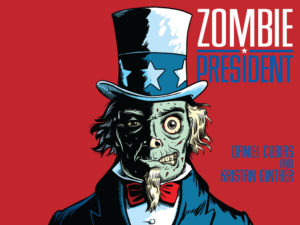So I was early in my tenure as a lowly editorial assistant at a New York City publishing house. At this particular company, 5:01 pm of each Friday marked The Running of The EAs. At that moment, every poorly compensated editorial assistant in the building sprinted for the elevator. I myself once came close to leaving my footprint in the chest of my boss, who had gotten between me and the exit with her banal wish that I “have a nice weekend.”
Once we hit the street, the EAs swarmed around one another in an unruly mob. We were like hopped-up worker ants without a queen, temporarily mystified about what to do next. We bounced around in random conversation, annoyed the passerby on Fifth Avenue, and spilled over into the street until finally, one of us asked what bar we were hitting tonight.
Because this was one of my first jobs out of college, I figured that every company was like this. It seemed that a staple of corporate life was that dozens of fun people regularly met outside the doors of their building, then walked to a bar together, where they would get drunk or make out with each other or get their all-time favorite song played repeatedly on the jukebox until it all broke up through exhaustion or the need for actual food (usually around midnight). Needless to say, a decade removed from both my twenties and New York City, I see that quitting time more often means shuffling to the parking lot and revving up the SUV for the long, solo ride home.
But at this point in history, it was all about going to a Greenwich Village hole with your peers. So I walked with them down the streets and avenues of Manhattan, a roving band of merrymakers who had little in common besides the fact that we all hated our jobs and were really loud.
When we got to the bar (an old favorite) on this night, we quickly took over the backroom by the pool table, which was our custom. To my concern, however, we had apparently used up all our witty banter on the walk through the Village, and now we had nothing to say. Perhaps it was because were only on the second round, so the alcohol hadn’t yet kicked in.
Regardless, it was going to be awhile before someone got drunk enough to say something idiotic or profound or both. So I took it upon myself to jumpstart conversation.
“OK, everybody,” I said. “Guess my race!”
One would think that, with the fragile state of race relations in this country, such a demand would prompt even more awkward silence or perhaps some aghast stares. In certain company, it’s more proper to grab an acquaintance’s hand and blow your nose into it while revealing a dark sexual secret. At least then you wouldn’t have to talk about race.
But this was a young, multiracial crowd in New York City, and I figured the odds were in my favor. Indeed, I had barely finished saying the words before an EA shouted, “Korean!”
“Wrong,” I said. “Drink up.”
“Iranian!” said another.
“Drink up.” I responded.
“Mexican,” an EA yelled.
“Be more specific,” I said. “Or less. Either way, drink up.”
It wasn’t long, of course, before I heard “Hispanic,” and I said that I would have also accepted Latino or El Salvadoran. But the game was on. For awhile, we swigged beer and shouted at each other about our ancestors.
Was that EA really Lithuanian-Brazilian? Was the other one half-black, half-white? And was Jewish a sufficient answer to a drinking game based on race? By the time we got to the Japanese-German girl, conversation was flowing more easily, and my job was done.
We never played the game again, and I’m sure that by the end of the evening, most EAs had forgotten who was a quarter-Swedish and who had been raised by a Puerto Rican stepfather.
But maybe we had opened a dialogue on the thorniest issue facing our great country, which would lead to major breakthroughs and the resolution of all the problems that gnaw at our national character.
Or perhaps it was just a way to speed up getting shit-faced on a Friday night.
Yes, I’m sure that was it.
And in any case, unlike old standbys such as “President” or “I Never,” this drinking game has a fundamental flaw. With any given crowd, you can only play it once.




